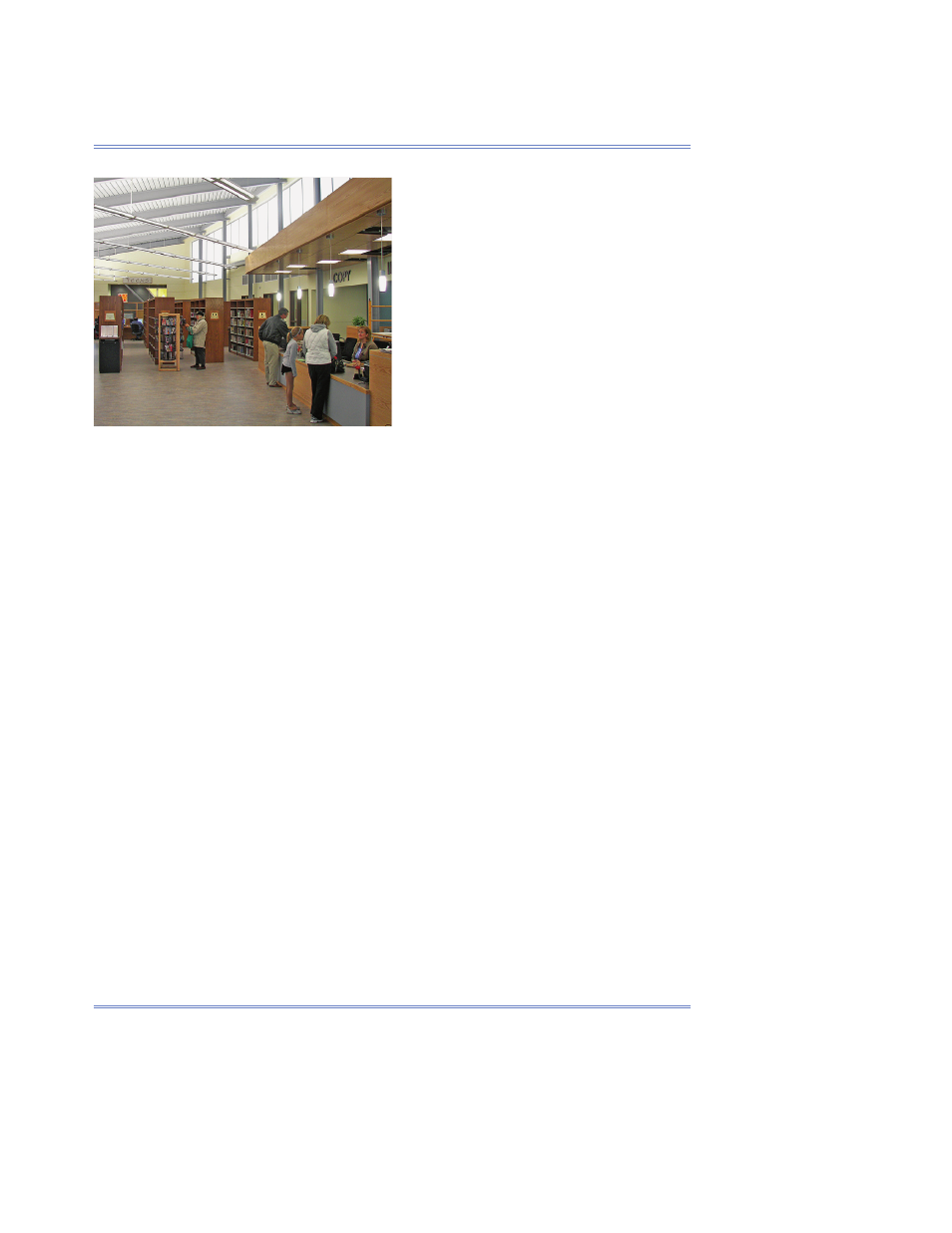Retrotec USACE User Manual
Page 219

Appendix D D89
D.5.2 Leaving Electric Lighting on in Daylit Spaces during
Daylight Hours (Waste)
Figure D143. Daylit library space with electric
lighting on.
Daylit spaces are designed to allow light from the sun to enter into the space and
reduce (and in some cases eliminate) the need for electric lighting during cer-
tain hours of the day. When suffi cient daylight is present to perform visual tasks
in the space, then any additional light provided by electric lighting is a waste
of energy (Figure D143). Advanced sensor/electronic controls can sense the
amount of daylight present and dim the lights accordingly, adding just the right
amount of electric light to keep light levels relatively constant as daylight avail-
ability changes with time of day and passing clouds. More often, though, lighting
controls are either not present, too simple to respond to changes in daylight, or
poorly optimized to the buildings’ envelope design. Where human interaction is
required to adjust electric lights when daylight is present, the control function
tends toward a step-function or simple on/off—poorly optimized to eliminate
waste as daylight changes continuously throughout the day. Optimized daylight-
ing controls can reduce lighting requirements by as much as 25–30%.
It is generally pretty easy to identify when electric lighting in daylit spaces
is unnecessary—ask yourself if the space would work just as well without it.
Providing the right controls to dim or turn off the lighting in response to the
daylight is the critical decision that takes some amount of expertise; the pho-
tocell and controlling devices are fairly specifi c, and it is best to consult with
engineers or contractors familiar with the broad range of equipment available
to optimize performance at a reasonable cost.
D.5.3 Having the Entire Floor of a Building Lit When Only a Few
People Are Working (Waste)
Having the entire fl oor of a building lit when only a few people are working is
waste. There are two reasons this generally occurs. One occurs is when controls
are not suffi ciently subdivided by zone. If there is only one switch that con-
trols all (or half) the lights on the fl oor, then the workers have no choice. The
